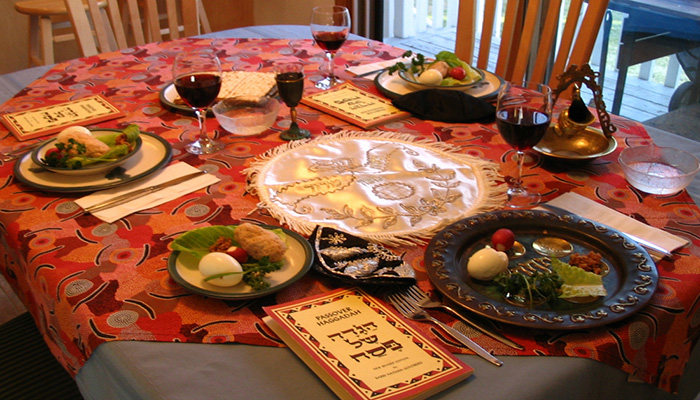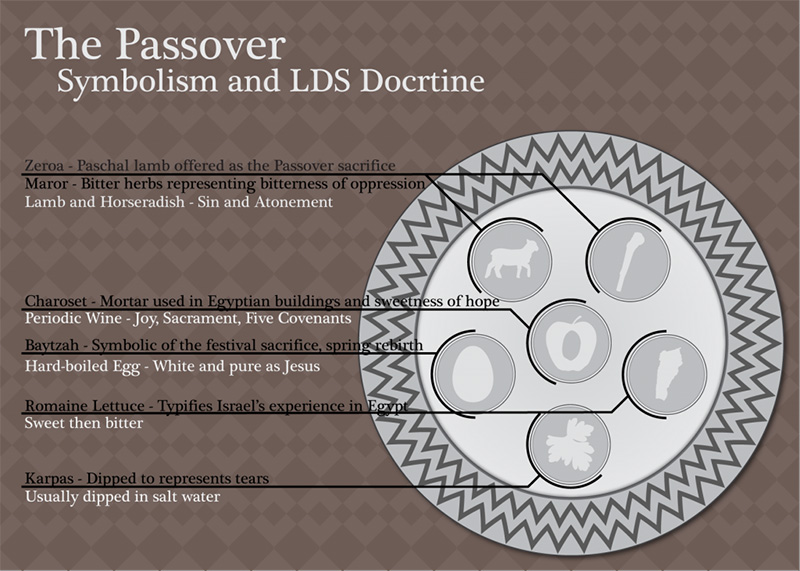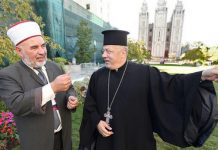
I recently was invited to attend a Passover Seder, a traditional ceremonial dinner that marks the beginning of the Passover. I was blown away by the symbols involved in the Seder, and how many point to Christ and the restoration of the gospel. Some are obvious and intentional, while some are harder to pinpoint, but all help me realize that all things testify of Christ (Moses 6:63). My thanks to Ben and Gayle Satterfield for their warm welcome into their home, and for pointing out many of these symbols to me. Here are 6 symbols of Christ and the restoration in the Seder:
Removal of Leaven
Before the meal begins a ritual takes place to find and remove all leaven from the house. Leaven represents impurity, a symbol Christ himself often used. Usually a few pieces of bread are left for children to find. The family burns the remaining leaven and takes it out of the house. But before the meal begins a prayer is read. In this prayer they state that they have removed all the leaven from the home, but if they had left some it was as though it was gone. This simple expression represents the power of the atonement in our lives. When we do everything we can to come to come to Christ, it is as though we are perfect, even though there is no way we truly are.
A Hardboiled Egg
When you sit down for dinner a “seder” plate with six compartments takes up the center of the table. In each compartment sits one food you will eat at some point during the Seder, with the exception of the egg. Within the context of the Seder, the egg represents the sacrifice that the Israelites would bring to the temple for the major festivals. Especially at Easter time eggs immediately bring to mind the idea of new life. Hard boiled eggs are pristine white. And all of these in a symbol for sacrifice.
Periodic Wine
Throughout the Seder the entire table takes a drink of wine (we used grape juice). Every time we drank represented high spots during the progress of the meal. This wine first was part of a symbolic representation of the creation of the Earth, and the joy felt in the Garden of Eden. More importantly, the wine represents five covenants found in Exodus 6:6-8 — I will bring you, I will deliver you, I will redeem you, I will be your God and you will be my people, and I will give you the promised land. Near the end of the meal, the wine is drunk directly after the matzo is eaten. Christ’s last supper actually was a Passover meal, and it is reasonable to assume that when he passed the bread and wine in remembrance of his flesh and blood it was during this part of the meal. The establishment of Israel in the promised land is meant to be an eternal return, and this covenant, Christ couldn’t fulfill until He comes again. That fulfillment is found in Doctrine and Covenants 27:5-14.
Horseradish & Lamb
The meal progresses through ritualistic telling of the exodus story. A sandwich is made with matzo bread and spiced apples representing mortar for bricks and the sweetness of hope by the Israelites. Then a second sandwich is made with matzo bread and horseradish. These bitter herbs represent the bitterness of slavery. This is not pleasant. Even if you like horseradish, it is incredibly difficult to enjoy when there is no other food to absorb the flavor (the hard matzo bread does nothing). The pain literally lingers on your tongue. Immediately following the horseradish, everyone partakes of a piece of lamb. The relief is phenomenal. Something about the hearty flavor of the lamb removes the sting of the horseradish. In a clear and rather effective object lesson we learn the power of the Lamb to remove the pain of our sins.
The Final Matzo
Before the meal begins three pieces of matzo are placed in a cloth on the table. Near the beginning of the seder meal and ritual the second of these three is taken out and broken. Most of the broken pieces are placed in a white shroud. This is laced with symbolism. Within Jewish numerology three represents God or perfection. As Latter-day Saints we recognize that the second member of the Godhead is Jesus Christ. When this piece of matzo is destroyed, it is then covered within a shroud, a traditional cloth for burial. There it rests through most of the meal. Near the end, the shroud is removed and the matzo comes back out. At this point the matzo is divided and can be eaten as a dessert. For Latter-day Saints this moment represents the resurrection of Jesus Christ. Since matzo must be pierced and striped to keep it from rising, the imagery is even more poignant.
A plate for Elijah
The end of the Seder consists of reading the last chapter of Malachi which prophecies of the coming of Elijah. This explains one extra place setting that has sat at the table for the entire meal, just in case Elijah comes. This symbolism is rather explicit in the Seder, but has special meaning for Latter-day Saints who know that Elijah has already returned and brought with him the priesthood keys to Joseph Smith. This empty plate specifically points to one of the reasons the restoration of the gospel was necessary.
It is fitting that Passover and Easter take place so closely together. The Passover supper that Christ partook in as his last supper testified of Him. The symbols that have endured to this day continue to point us toward Jesus Christ.







